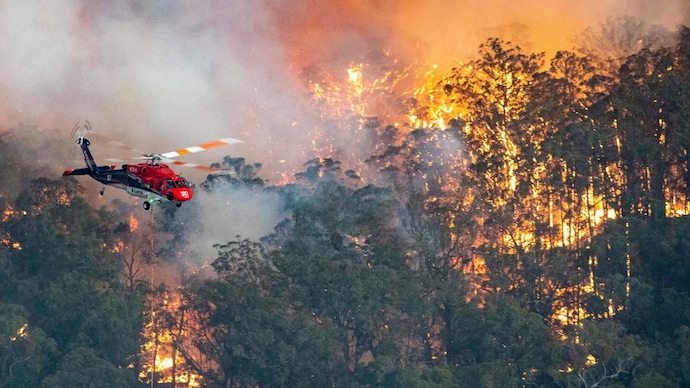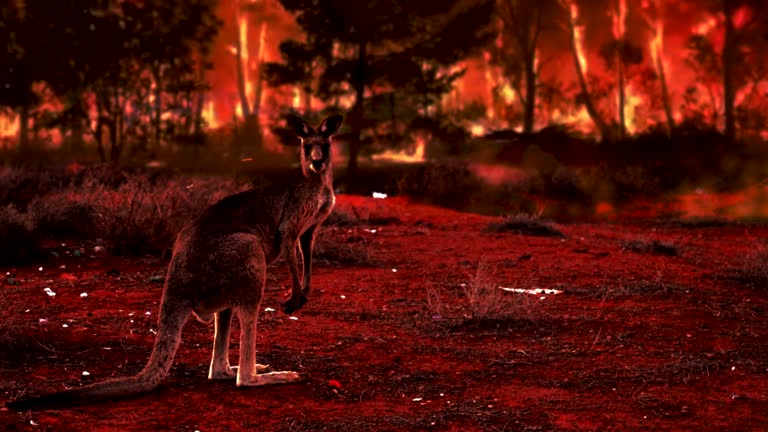Bushfire Risk Assessment Demystified: Exactly How to Translate and Act on Your Results
Bushfire Risk Assessment Demystified: Exactly How to Translate and Act on Your Results
Blog Article
Essential Tips for Bushfire Monitoring to Make Sure Fire Protection

Understanding Bushfire Danger Levels
Recognizing the varying levels of bushfire danger is necessary for efficient preparation and preparation in mitigating potential hazards to residential or commercial properties and lives. Bushfire risk degrees are normally categorized based on elements such as climate condition, gas schedule, topography, and historical fire habits. By understanding these risk communities, degrees and people can proactively apply techniques to reduce susceptability and boost resilience when faced with possible bushfire events.
The initial level of bushfire risk is low threat, where the chance of a bushfire occurring and creating substantial injury is minimal. This level usually occurs throughout periods of reduced temperature levels, moderate moisture, and minimal wind speeds. Modest risk degrees indicate a raised capacity for bushfires as a result of escalating weather or fuel schedule. High-risk levels symbolize a significant threat, with problems helpful to rapid fire spread and extreme fire habits. Extreme danger degrees are the most vital, posturing imminent risk to residential properties and lives as a result of extreme weather and highly flammable gas.
Comprehending these bushfire threat degrees allows stakeholders to customize their preparedness and feedback activities accordingly, making sure a efficient and positive approach to bushfire administration.
Creating a Defensible Room
Reliable bushfire monitoring begins with developing a defensible area around residential or commercial properties to enhance defense against possible fire threats. A defensible area is a buffer area that develops an obstacle in between a framework and the bordering combustible vegetation. This space serves as a critical line of protection, providing firefighters a safe location to run and assisting to reduce the risk of a fire infecting the residential property.
When establishing a defensible area, it is important to think about the layout of the residential property and the surrounding landscape. Cleaning greenery, specifically highly flammable plants, within a certain distance of the residential or commercial property can help avoid the quick spread of fires. Furthermore, preserving a well-irrigated area around the residential property can better improve its defensibility.
Normal maintenance of the defensible area is important to ensure its performance. This consists of trimming looming branches, removing dead plant life, and maintaining the area devoid of particles. By investing effort and time into establishing and keeping a defensible space, homeowner can significantly boost their chances of securing their homes and possessions during a bushfire.
Implementing Fireproof Landscape Design
When designing landscapes to minimize the threat of bushfires, incorporating fire-resistant aspects is important for improving property security and decreasing fire risks. Select plants with high wetness material, low oil material, and marginal dead vegetation to lower the threat of fire spread.

Producing an Emergency Evacuation Strategy
Establishing a thorough emergency discharge plan is essential for making sure the safety and security and wellness of individuals throughout possible bushfire cases (Bushfire Risk). An efficient emptying plan need to outline clear treatments to follow in case of a bushfire threat, including designated emptying courses, setting up factors, and communication methods
To begin developing an emergency evacuation strategy, it click for source is necessary to assess the details risks and vulnerabilities of your place. Recognize multiple emptying courses that lead to risk-free locations far from the fire, thinking about factors such as surface, roadway access, and potential threats. Establish interaction channels to alert locals of an impending evacuation, using techniques such as sirens, text alerts, or door-to-door notices.
Frequently testimonial and practice the discharge strategy with all homeowners or neighborhood participants to make sure everyone comprehends their responsibilities and roles. Conduct drills to evaluate the performance of the strategy and make any kind of needed changes. By having a well-prepared emptying strategy in place, you can enhance the chances of a orderly and risk-free discharge during a bushfire emergency.
Maintaining Fire Safety Tools
After developing a comprehensive emergency evacuation strategy for bushfire cases, it is necessary to focus on the routine maintenance of fire safety equipment to ensure optimum capability and readiness. Routine upkeep of fire safety and security tools such as fire extinguishers, smoke detectors, emergency alarm, and sprinkler systems is vital in protecting lives and home during a bushfire. When required., carrying out regular inspections, testing, and maintenance of these tools by qualified professionals is necessary to guarantee they are in functioning redirected here order.
Fire extinguishers must be checked on a regular basis for stress levels, noticeable damage, and correct capability. By carefully preserving fire safety equipment, individuals can improve their preparedness and action capacities in the occasion of a bushfire.
Conclusion
In conclusion, effective bushfire administration involves understanding risk levels, producing defensible areas, implementing fireproof landscaping, developing evacuation strategies, and keeping fire security tools. By adhering to these next essential pointers, individuals can make sure far better fire security and security for their areas and properties. It is essential to prioritize aggressive actions to minimize the risks connected with bushfires and to be planned for emergency situations.
By comprehending the subtleties of bushfire threat degrees, creating defensible areas, implementing fireproof landscaping, creating thorough emptying strategies, and guaranteeing the upkeep of fire safety and security devices, areas and people can dramatically boost their resilience against the ravages of wildfires - BAL Assessment. These ideas are not only essential for protecting against immediate fire hazards but likewise for fostering long-term fire security strategies that can make a considerable distinction in the face of rising bushfire risks
High-risk degrees represent a significant danger, with conditions conducive to rapid fire spread and severe fire habits. Regular maintenance of fire safety devices such as fire extinguishers, smoke detectors, fire alarms, and sprinkler systems is critical in protecting lives and building during a bushfire.In final thought, efficient bushfire administration entails understanding risk degrees, creating defensible areas, applying fire-resistant landscape design, creating emptying strategies, and keeping fire security devices.
Report this page